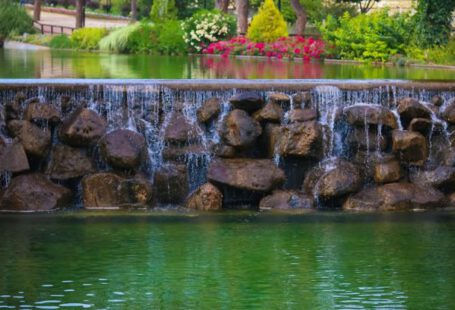A backyard pool can be a fantastic addition to your home, offering a place for relaxation, exercise, and entertainment. However, along with the fun and enjoyment, it’s crucial to prioritize safety in your pool area. Implementing the right safety features can help prevent accidents and ensure a secure environment for your family and guests. From physical barriers to technological advancements, there are various safety measures you can incorporate to enhance the safety of your pool area.
Physical Barriers
One of the most effective ways to enhance pool safety is by installing physical barriers such as fences and gates. A fence around your pool can act as a deterrent, preventing young children and pets from accessing the pool area unsupervised. The fence should be at least four feet high with no gaps large enough for a child to squeeze through. Self-closing and self-latching gates are also essential to ensure that the pool area remains secure when not in use.
Alarms
Pool alarms are another valuable safety feature that can provide an extra layer of protection. There are various types of pool alarms available, including surface wave sensors, subsurface disturbance sensors, and gate alarms. Surface wave sensors detect movements on the surface of the water, while subsurface disturbance sensors can alert you to any underwater activity. Gate alarms, on the other hand, sound an alert if the gate leading to the pool area is opened. By installing pool alarms, you can be immediately notified of any unauthorized access or activity in the pool area.
Safety Covers
Safety covers are an essential safety feature for pool owners, especially during the off-season or when the pool is not in use. A sturdy safety cover can prevent accidental falls into the pool, keep debris out of the water, and help maintain water quality. When choosing a safety cover, opt for one that meets safety standards and can support the weight of an adult to ensure maximum protection.
Anti-Entrapment Devices
Pool drains and suction outlets can pose a serious safety risk, especially for young children. To prevent entrapment accidents, consider installing anti-entrapment devices such as drain covers and safety vacuum release systems (SVRS). These devices help reduce the risk of entrapment by ensuring that there is no powerful suction that can trap swimmers underwater. Regularly inspecting and maintaining these devices is crucial to ensure their effectiveness in preventing accidents.
Swimming Pool Rules
Establishing and enforcing a set of swimming pool rules is essential for maintaining a safe pool environment. Clearly post the rules in the pool area and ensure that all family members and guests are aware of them. Some common pool rules include no running on the pool deck, no diving in shallow water, and no swimming alone. By setting clear guidelines and boundaries, you can help prevent accidents and promote responsible behavior around the pool.
CPR Training
In case of an emergency, knowing how to perform CPR can make a significant difference in saving a life. Consider enrolling in a CPR training course to learn essential lifesaving skills. Having a trained individual on site who can administer CPR in the event of a drowning incident can be crucial in providing immediate assistance until professional help arrives.
Regular Inspections and Maintenance
Regular inspections and maintenance of your pool area are essential to identify any safety hazards and address them promptly. Check for loose or broken tiles, slippery surfaces, malfunctioning equipment, and other potential safety concerns. Keeping your pool area well-maintained can help prevent accidents and ensure a safe environment for everyone.
Conclusion
Prioritizing safety in your pool area is crucial to prevent accidents and ensure a secure environment for your family and guests. By incorporating physical barriers, alarms, safety covers, anti-entrapment devices, establishing pool rules, obtaining CPR training, and conducting regular inspections and maintenance, you can create a safe and enjoyable pool environment. Remember, safety should always be the top priority when it comes to owning a pool, so take the necessary steps to protect yourself and your loved ones.





